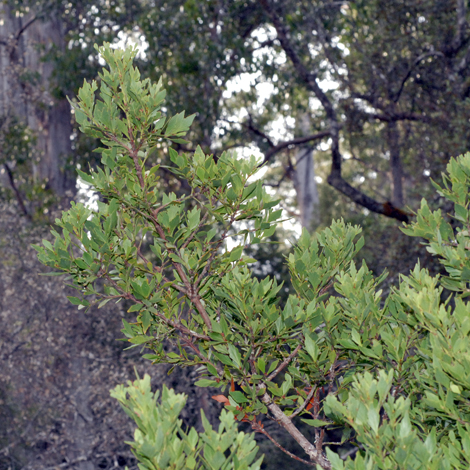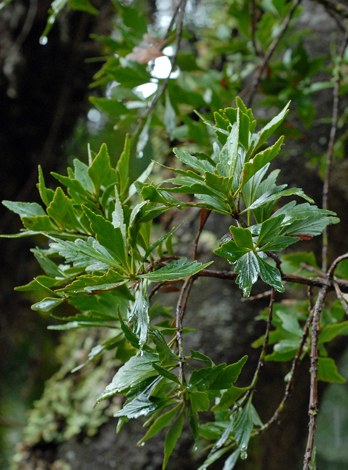Phyllocladus aspleniifolius Celery-top Pine Endemic


Looking nothing like a Pine tree in the British way of understanding it, this endemic tree which grows to about 20 metres in height is quite common in the temperate rain forests of Tasmania. It is related to the Huon Pine (Lagarostrobus franklinii) and although the wood is not as insect repellent and weather proof, the Celery-top Pine being much commoner is widely used for boat building and furniture making.
There are no cones in the normal sense but clusters of seeds produced at the tips of what look like the leaves. The seeds are surrounded by fleshy growths called arils. The "leaves" are actually cladodes (modified stems) but look like and photosynthesise like leaves. The cladodes are supposed to resemble Celery leaves hence the common name Celery-top Pine while whoever invented the systematic name thought they also looked like the fronds of Asplenium genus ferns, hence aspleniifolius. The real leaves are tiny brown scales only about 1mm long and there are few of them.
In Australia and Tasmania nothing is quite what it first seems to a European botanist.
RHS: Tahune Forest, 27th August 2007 LHS: Near Abt Wilderness railway, Tasmania, 31st August 2007
Added on October 4th 2011, updated 8th July 2014




